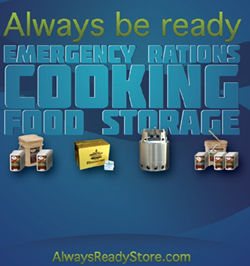Disaster preparedness is a critical aspect of ensuring the safety and security of your family during unforeseen emergencies. Whether facing a natural calamity like a hurricane, earthquake, or flood, or dealing with human-made crises such as power outages or civil disturbances, being well-prepared can significantly mitigate risks and help maintain your family’s well-being. This detailed guide delves into the top five disaster preparedness essentials, providing a thorough overview to equip your family with the necessary knowledge and tools to navigate emergencies confidently. These essentials include establishing an emergency communication plan, securing life essentials such as water and food supplies, ensuring appropriate shelter and clothing, stocking up on first aid and medical supplies, and formulating comprehensive emergency evacuation plans.
- Emergency Communication Plan in Place
Effective communication is the cornerstone of disaster response and recovery. The aftermath of a disaster often brings chaos and confusion, making it challenging to stay connected with family members. An emergency communication plan serves as a vital tool to overcome these challenges, ensuring that every family member knows how to contact one another and where to rendezvous if separated during a crisis.
The creation of a family emergency communication plan starts with identifying a common meeting place outside your home, a familiar and easily accessible location such as a community center or a local park. This is crucial if an emergency prevents access to or egress from your home. Additionally, appointing an out-of-state friend or relative as a central point of contact can provide an invaluable communication link. During disasters, local communication networks might be overwhelmed or down, while long-distance communications could still be operational.
The plan should encompass various communication methods, including text messages, social media, and emergency notification systems, which can be more reliable than voice calls in strained networks. Ensure that every family member, including children, knows how to use these methods. Distributing physical and digital copies of important contact information, including emergency services, medical facilities, and family contacts, is also essential. Regularly practicing and updating your communication plan ensures it remains effective and that everyone understands their role during an emergency.
- Life Essentials – Water and Food Supply for the Family
Access to clean water and sufficient food is paramount in disaster situations. The Federal Emergency Management Agency (FEMA) recommends storing at least one gallon of water per person per day for drinking and sanitation, aiming for a minimum three-day supply. For a family of four, this equates to storing at least 12 gallons of water. When selecting containers for water storage, opt for clean, food-grade containers, and replace the water every six months to ensure its safety.
Food supplies should focus on non-perishable items that do not require refrigeration, cooking, or significant water for preparation. Stock up on canned goods, including fruits, vegetables, and meats, alongside ready-to-eat cereals, energy bars, and dried fruits. Consider the dietary needs and preferences of your family members, including any allergies or health conditions that may dictate specific food choices. Aiming for a two-week supply offers greater security for extended emergencies. Regular rotation of your food stock ensures freshness and reduces waste by using items close to their expiration date.
- Shelter and Clothing
The importance of reliable shelter and appropriate clothing cannot be overstated in disaster preparedness. Your home is your primary shelter; thus, reinforcing its safety to withstand various disaster scenarios is crucial. This may involve securing heavy furniture to walls, reinforcing windows against storms, or retrofitting structures in earthquake-prone areas.
In addition to fortifying your home, prepare for potential evacuation or situations where parts of your home may become unsafe. Emergency blankets, sleeping bags, and portable shelters can provide temporary refuge. Clothing plays a significant role in protection against the elements. Assemble a set of emergency clothing for each family member, including durable footwear, weather-appropriate outerwear, and special items for extreme conditions, such as thermal layers in cold climates or breathable fabrics in hot environments.
- First Aid and Medical Supplies
A comprehensive first aid kit is a lifeline during emergencies, equipped to address minor injuries and stabilize conditions until professional medical help is available. Essential items include various sizes of bandages, antiseptics, sterile gloves, pain relievers, and prescription medications specific to family members’ needs. Also, consider adding items like thermal blankets, which can be crucial for treating shock, and tools like tweezers and scissors.
Knowledge of basic first aid procedures complements your medical supplies. Consider enrolling in first aid and CPR courses offered by organizations such as the American Red Cross. Familiarity with these lifesaving techniques empowers you to act confidently and effectively in emergency situations, potentially saving lives.
- Emergency Evacuation Plans
Understanding when and how to evacuate is a critical component of disaster preparedness. Develop a clear evacuation plan that includes multiple escape routes from your home and neighborhood, taking into account different types of disasters that could necessitate leaving your area. Identify locations of local emergency shelters and plan your route to these safe havens. For those dependent on vehicles for evacuation, maintaining a half-full gas tank at all times ensures readiness for immediate departure. For families without personal transportation, research public transportation options and community evacuation plans.
Each family member should have a personal “go bag” packed with essentials such as important documents, basic necessities, and personal items. These bags should be easily accessible and regularly updated to reflect changes in personal or medical information. Regular drills and discussions about the evacuation plan enhance familiarity with the process, reducing confusion and panic during actual emergencies.
Conclusion
Preparing for disasters requires a multifaceted approach, encompassing clear communication strategies, securing essential supplies, ensuring safe shelter and clothing, maintaining comprehensive first aid kits, and formulating detailed evacuation plans. By addressing these five critical areas, you can significantly enhance your family’s resilience in the face of disasters. Remember, the effectiveness of your preparedness efforts lies not only in the acquisition of supplies and knowledge but also in the continuous review and practice of your plans. Adopting a proactive stance towards disaster preparedness can safeguard your family’s well-being, providing peace of mind amidst the uncertainties of emergency situations.
Related Content
- Disaster Readiness: Building a Resilient Family Through Emergency Preparedness
- Embracing Readiness: How Family Preparedness Nights Can Safeguard Your Future
- Needed – A “Growing” Epidemic
- Can You Really Depend on Local and National Government Support During Times of Disaster?
- Our Print Publication is officially on the Way!








0 Comments